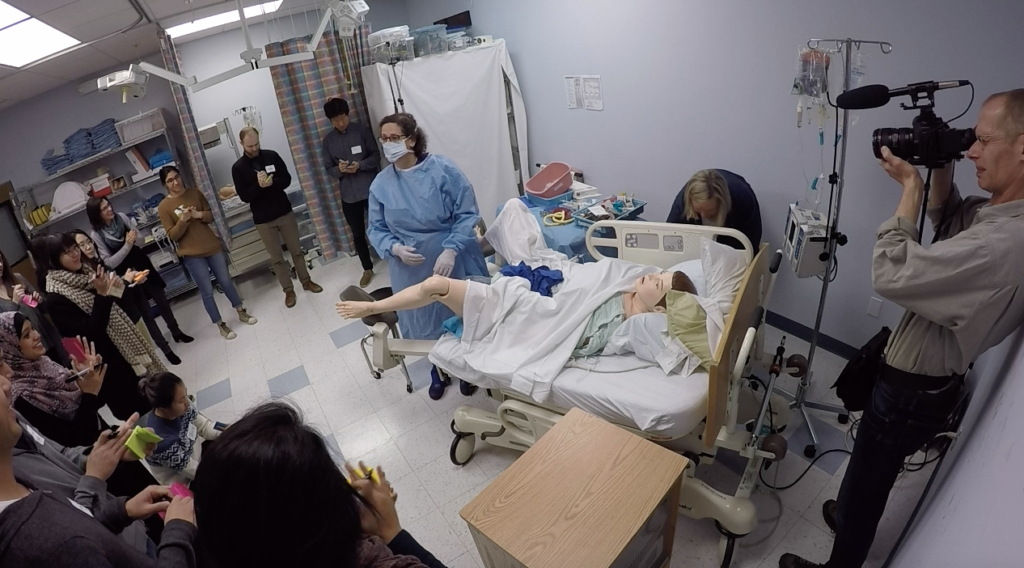Medical Device Design: Identifying Problems Through Observation 2017
Simulation learning fits well within the design-thinking paradigm: empathize (through immersion), define (the needs or problems), ideate (brainstorm), prototype (iterative low resolution style) and test with users (repeat). Creative people tend to work in two different ways: either as finders or makers. Finders demonstrate their creativity through discovery. They are driven to understand and to find explanations for phenomena not well understood. Makers are equally creative, but they are driven to synthesize what they know in new constructions, arrangements, patterns, compositions and concepts. In this class we will focus on what finders naturally do: observe, inquire and identify problems that are actionable through design. Our class focuses on practicing the first two phases of design-thinking methodology: 1) empathize 2) define, with a complex medical setting as our backdrop.
During this weekend d. School “Pop-Out” workshop, students observed neonatal and obstetric medical simulations designed by our teaching team (infant intubation and maternal hemorrhage). Students analyzed the scenarios by watching the videos afterwards with our clinicians. Information was gathered and synthesized. Problem definition followed in student groups. Students presented the clinical problems they identified through telling a story of the user, their innovation and the expected outcomes on a larger scale to a panel of doctors, nurses and medical device innovators. This workshop was held at The Center For Advanced Pediatric & Perinatal Education.

